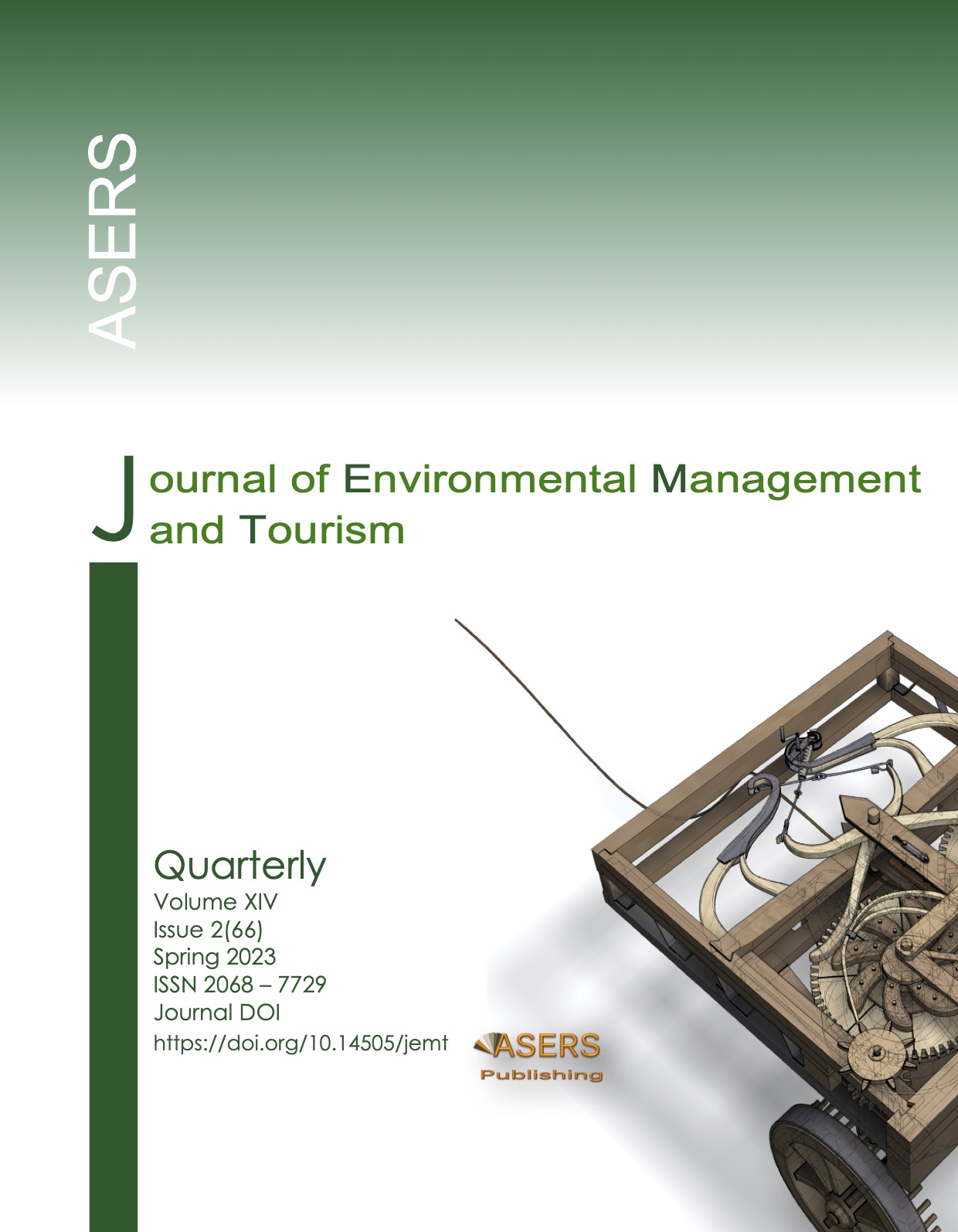Kazakhstan Tourism Industry in Promoting Sustainable Agriculture Development
Abstract
The expansion of such an area of tourism industry as agrotourism is a breakthrough for the development of rural industry. In addition, the integration of agro-tourism with agricultural eco-efficiency is closely related to agro-ecological development, therefore, it is necessary to study the relationship between the two in order to realize quality agro-ecological development. Integration of agriculture with other industries is an important means of expanding the agro-industrial chain and is useful for promoting sustainable agricultural development. The purpose of this study is to analyze the improvement of competitiveness of agricultural enterprises in the Republic of Kazakhstan through diversification of production and its impact on the tourism industry, including tourism enterprises. The degree of effectiveness of implementation of management decisions aimed at the development of tourism and agribusiness depends on the level of development of infrastructure and services in a particular region of the country. In this context, statistical data on the development of tourism and its relationship with agribusiness in the Republic of Kazakhstan are used to analyze some factors affecting their development.
References
[2] Asiedu, A. B., and Gbedema, T. K. 2021. Linking agriculture and tourism in Ghana: An example of underutilized development potential. Tourism and agriculture: New geographies of production and rural restructuring. London: Routledge, pp. 28-46.
[3] Baidybekova, S. K., Baitenova, L. M., and Kydyrbaeva, E. O. 2022. Enterprises of agricultural sector of the Republic of Kazakhstan: Efficient functioning. Problems of AgriMarket, 2: 112-120. DOI:https://doi.org/10.46666/2022-2.2708-9991.12
[4] Ćirić, A. 2021. Analysis of agroholdings' attitudes towards agritourism development and impacts on the Serbian economy, society and environment. Sustainable Development (Switzerland), 13(24): 1-15. DOI:https://doi.org/10.3390/su132413729
[5] Comerio, N., and Strozzi, F. 2019. Tourism and its economic impact: A literature review using bibliometric tools. Tourism Economics, 25(1): 109-131. DOI: https://doi.org/10.1177/1354816618793762
[6] Dax, T., Zhang, D., and Chen, Y. 2019. Agritourism initiatives in the context of continuous migration: Comparative perspectives for the Alps and mountain regions of China. Sustainable Development (Switzerland), 11(16): 1-13. DOI: https://doi.org/10.3390/su11164418
[7] Deng, T., Hu, Y., and Ma, M. 2019. Regional politics and tourism: A quasi-natural experiment. Annals of Tourism Research, 74(777): 1-16. DOI: https://doi.org/10.1016/j.annals.2018.10.001
[8] Gruia, R., Gaceu, L., and Oprea, O.B. 2021. Post-pandemic development of Romania's agritourism resurgence. Journal of EcoAgriTourism, 17(1): 60-65.
[9] Karampela, S., Andreopoulos, A., and Koutsouris, A. 2021. "Agro", "Agri" or "Rural": Different perspectives on tourism research combined with sustainability and sustainable development. Sustainability (Switzerland), 1(10): 55-67. DOI: https://doi.org/10.3390/su13179550
[10] Liu, Z., Yang, D., and Wen, T. 2019. Transformation of agricultural production modes and production efficiency: The lens of division of labor and cooperation. China Agricultural Economic Review, 11(1): 160-179. DOI: https://doi.org/10.1108/CAER-07-2017-0129
[11] Nie, L., and Fang, F.Y. 2019. Joint integration analysis of integrated indicators of tourism industry and agriculture in Hainan province against the background of free trade zone. Hainan University Journal of Humanities and Social Sciences, 37(2): 63-69. DOI: https://doi.org/10.15886/j.cnki.hnus.2019.02.008
[12] Pitrova, J., et al. 2020. Economic implications of diversification into agritourism. International Review of Food and Agribusiness Management, 23(5): 713-734. DOI: https://doi.org/10.22434/IFAMR2020.0076
[13] Ristić, L., Bošković, N., and Despotović, D. 2019. Sustainable integrated agricultural and tourism development in the Republic of Serbia. Economic Horizon, 21(1): 57-74. DOI:https://doi.org/10.5937/ekonhor1901057r
[14] Streifeneder, T. 2018. Agriculture first: an evaluation of European policies and scientific typologies for defining authentic agrotourism and differentiating it from rural tourism. Tourism Management Perspectives, 20: 251-264. DOI: https://doi.org/10.1016/j.tmp.2018.10.003
[15] Wang, B. Y., and Zhang, W. G. 2018. Measurement and temporal and spatial differences of agricultural ecoefficiency in China. Population, resources and environment in China, 26(6): 11-19. DOI:https://doi.org/10.3969/j.issn.1002-2104.2016.06.002
[16] Wang, J. J., Zhou, F. M., and Xie A. L. 2022. Impact of integrated agricultural and tourism development on rural environmental quality. Wireless Communication and Mobile Computing, 11: 6113324. DOI:https://doi.org/10.1155/2022/6113324
[17] Wang, J., Zhou, F., and Xie, A. 2022. Impacts of the integral development of agriculture and tourism on agricultural eco-efficiency: A case study of two river basins in China. Environment, Development and Sustainability, 5(12): 78-89. DOI: https://doi.org/10.1007/s10668-022-02781-x.
[18] Zou, E. 2020. Assessment and analysis of agricultural nonpoint source pollution loads in China: 1978-2017. Journal of Environmental Management, 263: 110400. DOI: https://doi.org/10.1016/j.jenvman.2020.110400
[19] Official resource of Analytical digest. Agricultural sector 2021. Available at: www.https://www.1cb.kz/
[20] Official resource of Joint forecasts for the development of the agro-industrial complex, balances of supply and demand of the member states of the Eurasian Economic Union for agricultural products, food, flax fiber, raw hides, cotton fiber and wool for 2021-2022. Available at: www.https://eec.eaeunion.org/
[21] Official resource of the Data from the Bureau of National Statistics of the Agency for Strategic Planning and Reforms of the Republic of Kazakhstan for 2010-2021. Available at: http://www.stat.gov.kz
[22] https://forbes.kz/
[23] https://tourstat.kz/
Copyright© 2025 The Author(s). Published by ASERS Publishing 2025. This is an open access article distributed under the terms of CC-BY 4.0 license.
